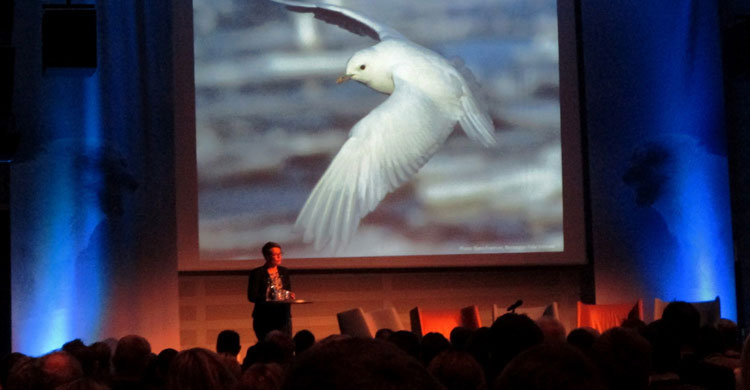Arctic Biodiversity Congress in Trondheim

Ms. Tine Sundtoft, Minister of Climate and Environment, Norway, opening the Arctic Biodiversity Congress in Trondheim
Bonn /Trondheim, 2 December 2014 - The Arctic Council’s working group on the Conservation of Arctic Flora and Fauna (CAFF) organized the Arctic Biodiversity Congress, which took place in Trondheim, Norway, from 2-4 December, in conjunction with the Norwegian Environment Agency. The Congress was designed to promote the conservation and sustainable use of Arctic biodiversity by means of a dialogue involving scientists, policy-makers, business, civil society and indigenous peoples.
The Congress convened sessions and presentations on three main themes: Arctic change, resilience and adaptation; mainstreaming biodiversity and linking Arctic ecosystems to society; and understanding cumulative effects and managing impacts.
The UNEP/AEWA Secretariat was represented at the meeting by the Agreement’s Executive Secretary, Jacques Trouvilliez who participated in a plenary discussion on “International cooperation and global conventions: addressing Arctic biodiversity” which took place on 4 December. He and Nina Mikander, the Associate Programme Officer responsible for International Single Species Action Plans, also participated in a Workshop on the Arctic Migratory Birds Initiative (AMBI) African-Eurasian Flyway which directly followed the Arctic Biodiversity Congress.
A significant number of the 255 bird populations listed on the AEWA Annexes breed mainly or exclusively in the Arctic, including two of the most endangered species, the Lesser White-fronted Goose and the Red-breasted Goose. Few birds spend the whole year in the Arctic; many fly south to warmer climates and some, such as the Red Knot, migrate as far as southern Africa.
IISD produced daily web and Twitter coverage and a summary from the three-day Congress which can be found here.
Last updated on 05 January 2015


